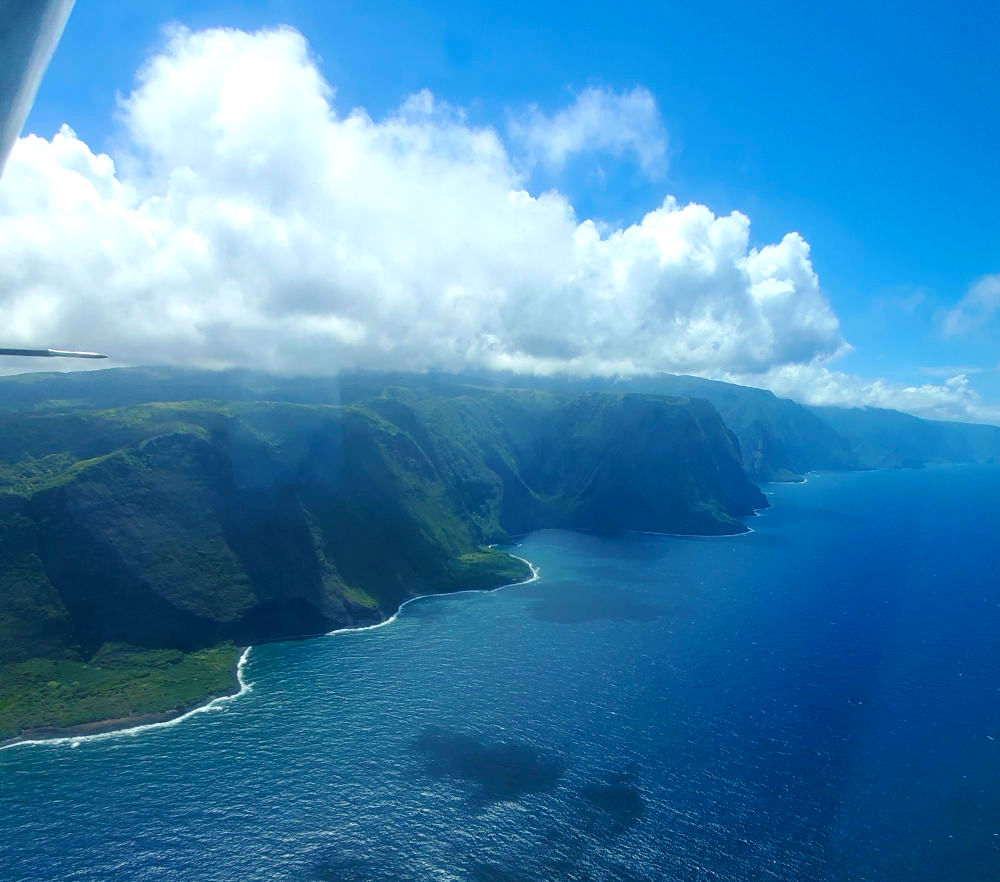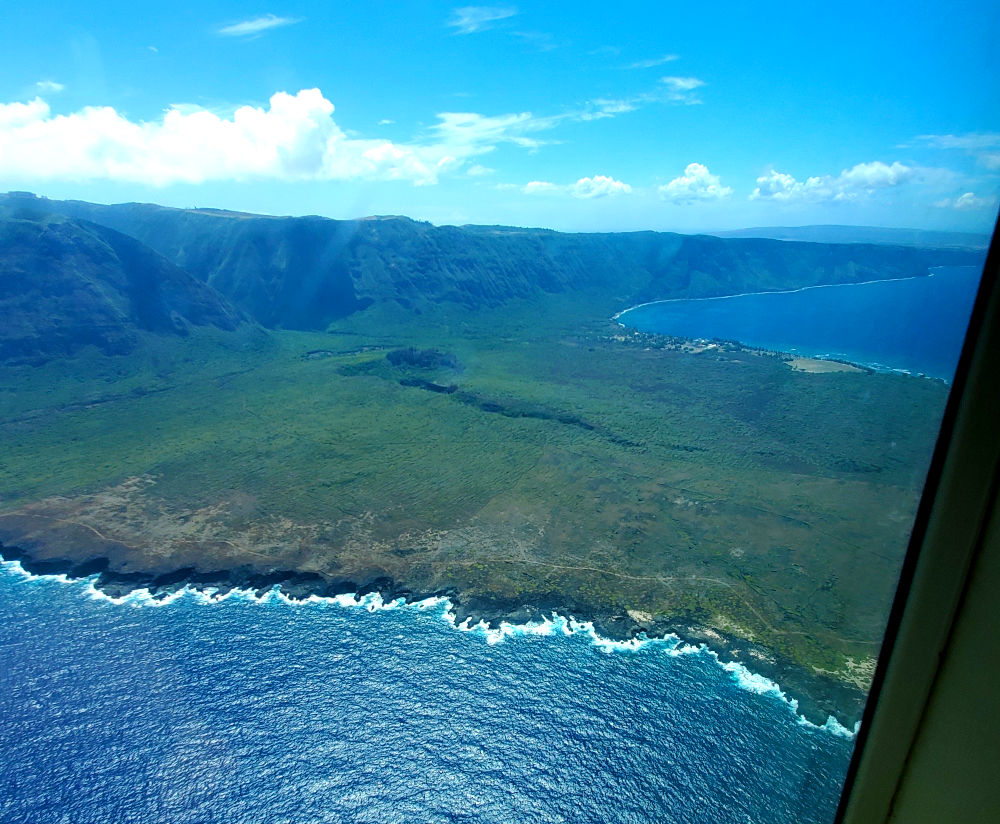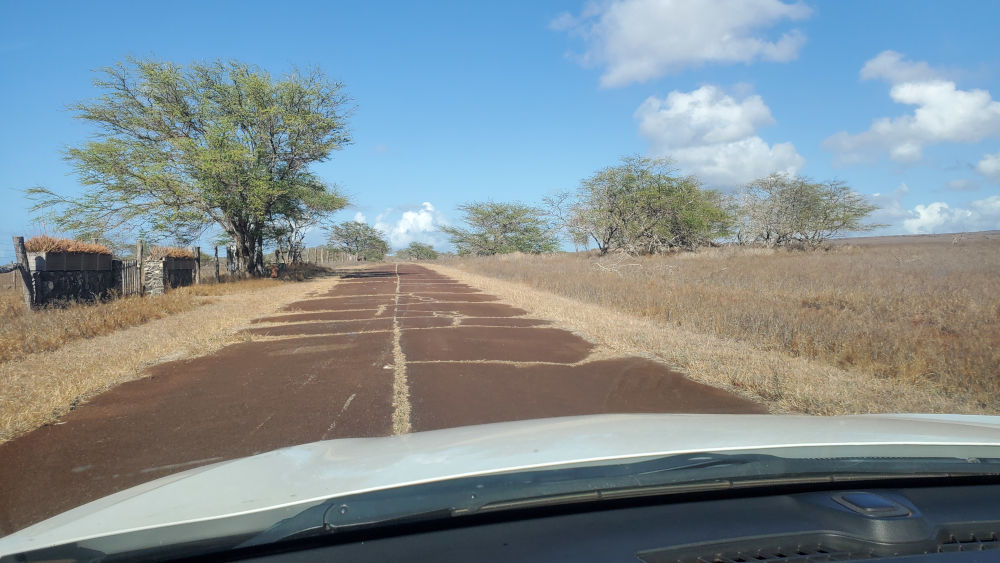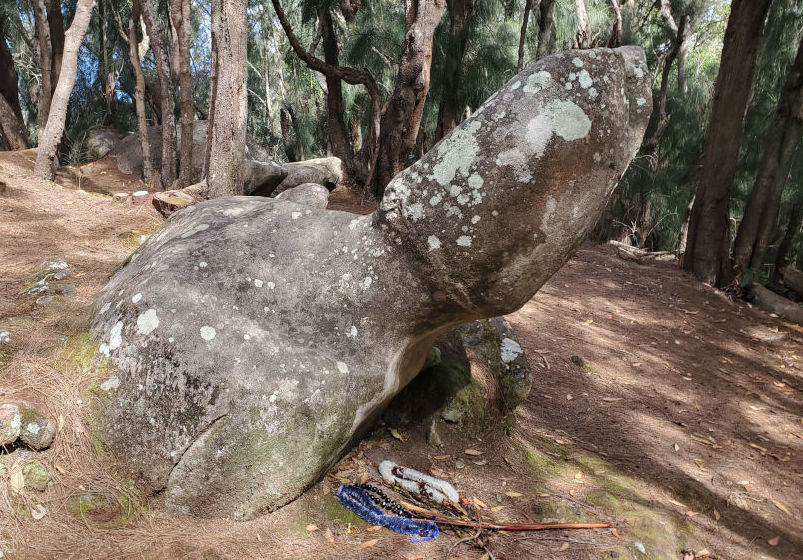but surely molokai's lack of tourism isn't a result of bad historical vibes and super tall cliffs? leading up to my trip, i had gotten really intrigued by the question of why molokai was so unpopular with tourists and did some research. just what exactly was this place i had impulsively booked a trip to? data i found online confirmed that not only is molokai the least visited hawaiian island, but it's also the only one where tourism has actively declined in the past twenty years. molokai tourism numbers peaked in 2003 at around 94,000 annual visitors, and dropped steadily down to just 43,000 last year. meanwhile, maui went from 1.8 million visitors in 2003 to 2.9 million in 2022, and the state of hawaii as a whole has gone from 6.3 million to 9.3 million. what is going on?
molokai, like many peripheral places, has had a long history of being sidelined and/or exploited by outsiders. when king kamehameha was unifying hawaii in the late 18th century, he conquered it almost as an afterthought on his way down to capture oahu (the residents helped out quite a bit by not putting up much of a resistance). the next time the hawaiian monarchs thought of molokai, it was to designate the kalaupapa peninsula a leper colony, and from then on molokai was known as the leper colony island. when the monarchy was overthrown around the turn of the century, along came the businessmen from the mainland to buy up all the land and use it for agriculture. but they didn't really concern themselves with farming sustainably, and so after several decades the dry part of the island was ecologically devastated, unable to support anything besides non-native grasses and the hardy (but invasive) kiawe tree. at that point it was only suitable for ranching, which leads to a vicious cycle that eventually makes the land unsuitable even for ranching. molokai ranch, by far the island's largest landowner (and also owned by outsiders and headquartered off-island), was left with thousands of acres of dusty, unproductive land on the western dry side of molokai.
but then tourism began to boom in hawaii, and molokai ranch was in the perfect position to benefit. as we know from maui, tourists despise the rain, and so resorts are always built on the dry sides of islands, which molokai ranch happened to own most of on molokai. they started out small, steadily building out tourist infrastructure starting at their base in maunaloa, but their ambition was to eventually build big resorts and golf courses and shopping malls, just like on the other islands. when they really began to expand in earnest, though, the residents of molokai (only a "vocal minority" though according to one article) weren't having it. molokai's situation is relatively unique in several ways, it only has the population of a small town and a large proportion of the residents are native hawaiians (the highest proportion of any of the islands). it's quiet, rural, and undeveloped, and the residents would prefer to keep it that way, as the most "hawaiian" of the islands. they even refused to deface their island with wind turbines like maui did to take advantage of the prodigious amounts of wind coming off the ocean, and instead continue to rely on expensively importing diesel gas to produce electricity. so when molokai ranch began to push their resort plans, it resulted in protracted protests and even sabotage. the protests were unusually effective (possibly because many residents are unemployed and had plenty of time and energy to devote to the cause), and after years of fighting them without success and among mounting financial losses, molokai ranch finally gave up. one day about fifteen years ago, they shuttered all their facilities and laid everyone off. with this one move, molokai's tourist infrastructure was effectively decapitated, and never recovered.
i read an article online somewhere about the "molokai development mystery", the main thrust of which could be summarized along the lines of "how could these backwards people POSSIBLY reject the prosperity that economic development and tourism would have assured them?!" killing time before it was check-in time at my exceptionally-cheap airbnb, i drive nearly the entire length of the island. like on the back side of maui near hana, it looks very similar to rural areas back on the mainland. the main difference is that i see a lot of people out and about having fun. they're hanging out on the beach, they're having a kid's birthday party out of the garage, they're having a huge luau in somebody's front lawn. it feels a lot more alive and social than the rural areas i usually drive through. for their lack of economic development, the residents of molokai don't really seem particularly miserable or deprived. i am reminded of the old joke (stop me if you've heard this one before): a millionaire businessman strolls along the beach on vacation and encounters a fisherman napping on the sand. he wakes him up and admonishes him: "hey, what are you doing here sleeping! you should be out there catching fish and earning money, and then you can hire other fisherman to work for you and expand, and once you have enough working for you, you can hire somebody to manage them and make money without having to work so much, and then you'll have the time and money to travel and relax on the beach like me!" the fisherman replies: "but i am already relaxing on the beach right now!" and goes back to snoozing.





